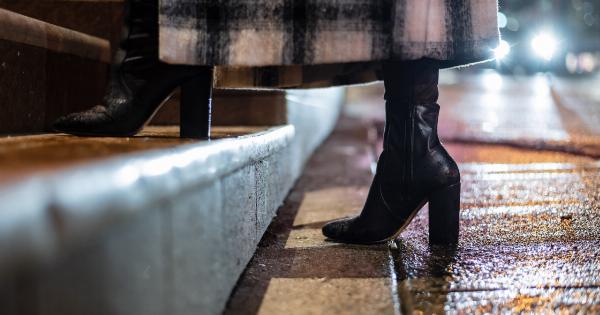Many individuals suffer from middle back pain, which can be debilitating and affect their daily life. While there can be several causes for this discomfort, one factor that is often overlooked is the sleeping position.
The way you sleep plays a significant role in your spinal alignment during the night, and certain positions can put excessive strain on the middle back, leading to pain and discomfort. In this article, we will explore the different sleeping positions and how they can contribute to middle back pain.
The Importance of Spinal Alignment
Before we delve into the specific sleeping positions, it’s crucial to understand the importance of spinal alignment. Your spine consists of three natural curves: the cervical (neck), thoracic (middle back), and lumbar (lower back) curves.
These curves work together to maintain proper posture and distribute your body’s weight evenly.
When you lie down to sleep, it’s essential to maintain these natural curves to prevent unnecessary pressure on the spinal discs, nerves, and muscles.
Disrupting the natural alignment of the spine can lead to various musculoskeletal issues, including middle back pain.
The Best Sleeping Positions for Middle Back Pain
If you often wake up with middle back pain, adjusting your sleeping position may provide relief. Here are a few sleeping positions that can help alleviate middle back discomfort:.
1. Back Sleeping Position
Sleeping on your back is generally considered the best position for spinal alignment. It allows your body to distribute weight evenly and helps maintain the natural curves of your spine.
To enhance this position, consider using a support pillow beneath your knees to further relieve pressure on the middle back.
2. Side Sleeping Position
Side sleeping is another good option for individuals with middle back pain. This position can help reduce the risk of snoring and alleviate sleep apnea symptoms.
To enhance spinal alignment while side sleeping, use a pillow of adequate height to support your neck and ensure your spine remains straight. Additionally, placing a pillow between your knees can further alleviate pressure on the middle back.
3. Stomach Sleeping Position
Sleeping on your stomach is generally considered the least favorable position for spinal alignment. It can strain the middle back by flattening the natural curves of your spine and placing excessive pressure on your neck and lower back.
If you prefer this position, using a thin pillow or no pillow at all can help reduce the strain on your back.
The Worst Sleeping Positions for Middle Back Pain
While some sleeping positions can provide relief for middle back pain, others can exacerbate the symptoms. Here are a few positions to avoid if you struggle with middle back discomfort:.
1. Fetal Position
Sleeping in a curled-up position can put excessive strain on your middle back and restrict your breathing. The fetal position flattens the natural curves of your spine and can cause stiffness and pain upon waking.
Try to extend your body as much as possible to maintain proper spinal alignment.
2. Twisted Position
Sleeping in a twisted position, where your upper body and lower body face different directions, can strain the middle back muscles and ligaments. This position can also result in misalignment of the spine, leading to pain and discomfort.
To prevent middle back pain, aim to keep your body aligned while you sleep.
3. Unsupported Back Position
Sleeping without adequate back support can put excessive strain on the middle back. If your mattress is too firm or too soft, it can disrupt the natural alignment of your spine.
Investing in a mattress that provides the right balance of support and comfort can help alleviate middle back pain.
Tips for Better Sleep and Reduced Middle Back Pain
In addition to sleeping in the right position, implementing these tips can further improve your sleep quality and reduce middle back pain:.
1. Choose the Right Mattress and Pillow
Ensure your mattress provides adequate support and is suitable for your preferred sleeping position. Additionally, invest in a pillow that supports your neck and maintains proper spinal alignment.
2. Stretch Before Bedtime
Engage in gentle stretching exercises before bed to relax your muscles and relieve tension in the middle back area. This can help promote better sleep and reduce the likelihood of waking up with discomfort.
3. Practice Good Posture
Maintaining good posture throughout the day can alleviate stress on your middle back. By sitting and standing with proper alignment, you can reduce the chances of developing pain during sleep.
4. Use Heat or Cold Therapy
If you experience middle back pain at night, applying heat or cold therapy can help alleviate discomfort. Experiment with hot or cold packs to find which works best for your individual needs.
5. Consult a Healthcare Professional
If your middle back pain persists or worsens despite implementing various lifestyle changes, it’s essential to consult a healthcare professional. They can assess the underlying cause of your pain and provide appropriate treatment options.





























